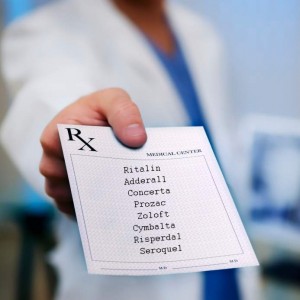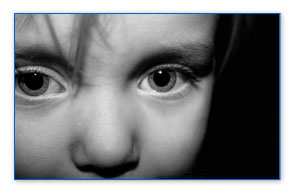The Independent—Jan 15, 2012
by Karen Warnick
 The new version of the Diagnostic and Statistical Manual of Mental Disorders (DSM-V) will be out this May and has received a lot of criticism. Published by the American Psychiatric Association (APA), the manual is the bible of who is not “normal” and has some kind of mental disorder that needs treatment.
The new version of the Diagnostic and Statistical Manual of Mental Disorders (DSM-V) will be out this May and has received a lot of criticism. Published by the American Psychiatric Association (APA), the manual is the bible of who is not “normal” and has some kind of mental disorder that needs treatment.
The chairman of version four, which came out in 1994, was Allen Francis who is professor emeritus and former chairman of the Department of Psychiatry at Duke University. He has stated they made a huge mistake that “has resulted in the mass over-diagnosis of people who are actually quite normal.”
It needs to be stated here that the APA holds the tightly guarded copyright on the manual and makes over $5 million a year selling it.
Since the first one came out in 1952, with 106 disorders, new disorders have been added and the total in the last one was 365.
Francis believes the new version is multiplying “our mistakes…This wholesale medical imperialization of normality could potentially create tens of millions of innocent bystanders who would be mislabeled as having a mental disorder. The pharmaceutical industry would have a field day, despite the lack of solid evidence of any effective treatments for these newly proposed diagnoses.”
 It should also be noted that of those that helped to write the DSM-IV, over half had financial relationships with the pharmaceutical industry, and in the case of diagnoses where drugs are the first line of treatment for some mental illnesses, 100 percent had ties to big pharma. So conflicts of interest and the massive amounts of money made by drug companies aside, the DSM is primarily concerned with the signs and symptoms of mental disorders and not the underlying causes.
It should also be noted that of those that helped to write the DSM-IV, over half had financial relationships with the pharmaceutical industry, and in the case of diagnoses where drugs are the first line of treatment for some mental illnesses, 100 percent had ties to big pharma. So conflicts of interest and the massive amounts of money made by drug companies aside, the DSM is primarily concerned with the signs and symptoms of mental disorders and not the underlying causes.
Critics, including many in the psychiatric field, believe the DSM lacks credibility, validity and is not scientific.
It would seem that giving psychotropic drugs to children, teenagers, and adults, should be based on something more than someone’s suggestion that they are not “normal.”
“Normalcy is not achieved through medication,” says Francis. “Normalcy is not the absence of a range of emotion. Life necessarily involves emotions, experiences and behaviors which, from time to time, step outside the bounds of mundane.”
 The problem with prescribing drugs for symptoms of mental illness, real or not, is that the drugs create terrible side effects that can actually create real mental disorders. In my last column I wrote about drugs being used for mental disorders in between 60 to 90 percent of mass shootings in the past 20 years.
The problem with prescribing drugs for symptoms of mental illness, real or not, is that the drugs create terrible side effects that can actually create real mental disorders. In my last column I wrote about drugs being used for mental disorders in between 60 to 90 percent of mass shootings in the past 20 years.
Most of the drugs being taken by these shooters had side effects that included violence.
Some of the changes made to the manual include grief after a loved one dies as a “major depression” where it used to have a time frame. Another change is listing Asperger’s as part of the autism spectrum disorder instead of being separate. Asperger’s is a very mild form of autism. Many critics claim that autism doesn’t belong in the DSM as it is a metabolic disorder affecting many body systems and not a mental disorder.
The new additions include binge eating as a disorder and means that if you binge eat once per week for three months you have a mental disorder. The word binge is defined as “a period or bout, usually brief, of excessive indulgence, as in eating or drinking alcoholic beverages.”
Binge drinkers will be labeled as addicts.
“Minor neurocognitive disorder would capture many people with no more than the expected memory problems of aging,” says Francis. “Mixed anxiety depression is defined by commonplace symptoms difficult to distinguish from the emotional pains of everyday life. Attention deficit disorder would become much more prevalent in adults, encouraging the already rampant use of stimulants for performance enhancement.”
 Temper tantrums in children and adolescents will be called “disruptive mood dysregulation disorder” for those who exhibit “persistent irritability and frequent episodes of behavior outbursts three or more times a week for more than a year. That would include most 2 year olds and most teenagers.
Temper tantrums in children and adolescents will be called “disruptive mood dysregulation disorder” for those who exhibit “persistent irritability and frequent episodes of behavior outbursts three or more times a week for more than a year. That would include most 2 year olds and most teenagers.
Substance abuse and substance dependence is now classified as substance use disorder. It would seem counterintuitive to prescribe strong medicine that in many cases is addictive to those with substance problems.
One of the disorders that were dropped from the new manual for further study is “psychosis risk syndrome” which would diagnose adolescents at risk for developing future psychosis based on their behavior or character traits. It’s a good thing that was dropped as most of us have “episodes” of psychosis at least once in our lives.
Do we really need more people on psychotropic drugs? Do we really need to label behavior that doesn’t fit into someone else’s code of ethics as not normal? This is not to say that some people are helped by drugs for mental disorders, but there are plenty of stories of those who have been harmed by being labeled “mentally ill” and who have been given drugs with serious side effects.

